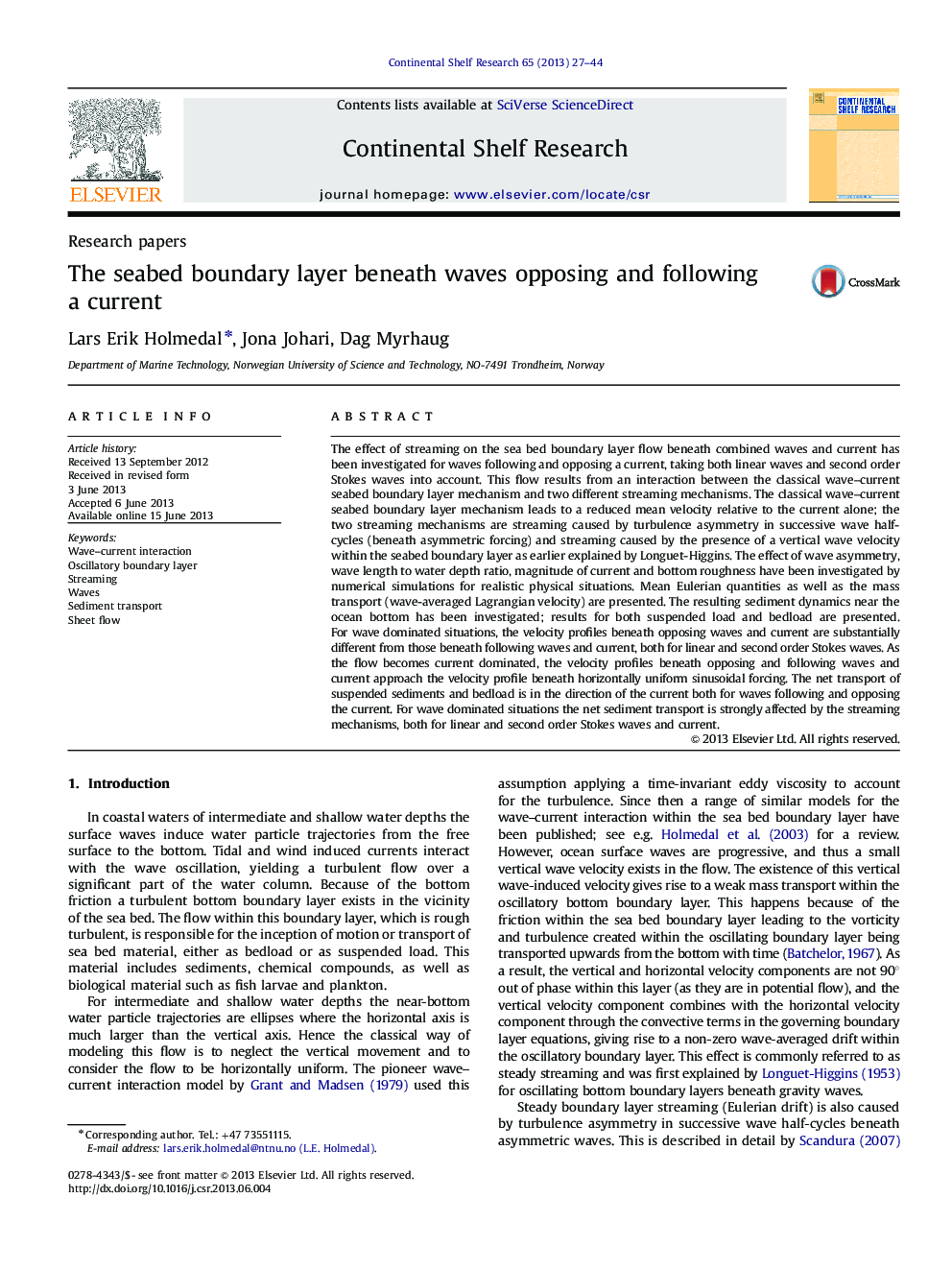| کد مقاله | کد نشریه | سال انتشار | مقاله انگلیسی | نسخه تمام متن |
|---|---|---|---|---|
| 4532101 | 1626147 | 2013 | 18 صفحه PDF | دانلود رایگان |

• Effect of streaming on the combined wave–current seabed boundary layer.
• Seabed boundary layer flow beneath opposing and following waves and current.
• Sediment transport beneath opposing and following waves and current.
The effect of streaming on the sea bed boundary layer flow beneath combined waves and current has been investigated for waves following and opposing a current, taking both linear waves and second order Stokes waves into account. This flow results from an interaction between the classical wave–current seabed boundary layer mechanism and two different streaming mechanisms. The classical wave–current seabed boundary layer mechanism leads to a reduced mean velocity relative to the current alone; the two streaming mechanisms are streaming caused by turbulence asymmetry in successive wave half-cycles (beneath asymmetric forcing) and streaming caused by the presence of a vertical wave velocity within the seabed boundary layer as earlier explained by Longuet-Higgins. The effect of wave asymmetry, wave length to water depth ratio, magnitude of current and bottom roughness have been investigated by numerical simulations for realistic physical situations. Mean Eulerian quantities as well as the mass transport (wave-averaged Lagrangian velocity) are presented. The resulting sediment dynamics near the ocean bottom has been investigated; results for both suspended load and bedload are presented. For wave dominated situations, the velocity profiles beneath opposing waves and current are substantially different from those beneath following waves and current, both for linear and second order Stokes waves. As the flow becomes current dominated, the velocity profiles beneath opposing and following waves and current approach the velocity profile beneath horizontally uniform sinusoidal forcing. The net transport of suspended sediments and bedload is in the direction of the current both for waves following and opposing the current. For wave dominated situations the net sediment transport is strongly affected by the streaming mechanisms, both for linear and second order Stokes waves and current.
Journal: Continental Shelf Research - Volume 65, 15 August 2013, Pages 27–44